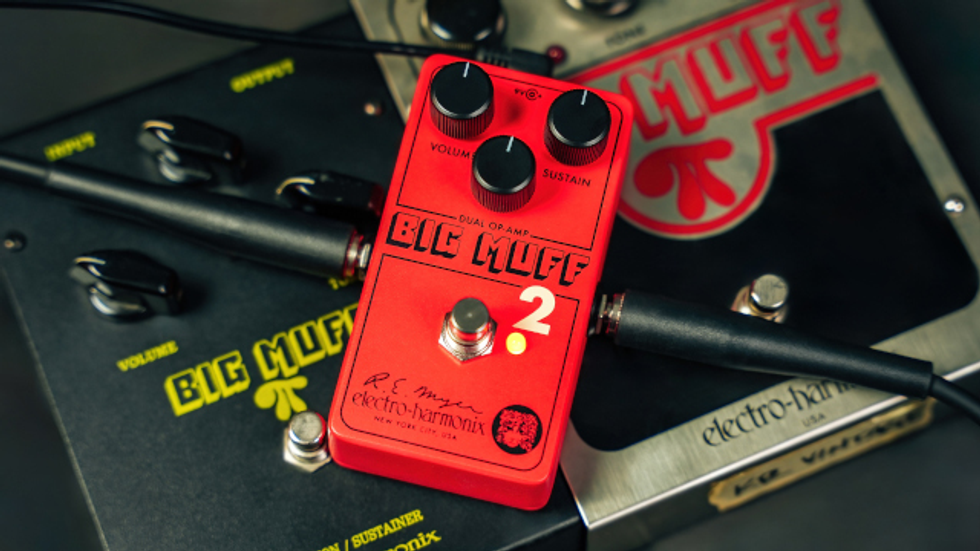When I first got into recording music, listening
to different microphones was my initial
priority, and listen I did to some 60-odd
models. This was when I discovered that
ribbon mics sounded best to me (and also
sounded like “me” the most). This month,
as promised, I’ll share my thoughts on three
of my favorite ribbon microphones—the
Beyerdynamic M 160, the Royer R-122, and
the Audio-Technica AT4081—and discuss
how you might consider using them to capture
your own tone.
But before we jump into the details of
these specific models, it might be wise
to revisit some basic ribbon microphone
guidelines. For starters, be extremely careful
about not using any 48-volt phantom
power with ribbon mics. If you have the
bad habit of keeping the phantom power
switched on at your mixer or microphone
preamp, you may very well destroy the
ribbons in a mic like the M 160 (we’ll talk
about the other two mics and how they are
affected in a moment). This is a part of ribbon
microphones that you must embrace,
so remember to keep the juice off.
The second thing to remember is to avoid
placing a ribbon microphone too close
to a loud signal source. This practice can
literally “blow” the ribbon to the point
of breaking, so keep your guard up until
you’ve got this information burned into
your cerebral cortex. Trust me on this—you
don’t want to blow any ribbons, particularly
if you bought a used mic without any
warranty, because it can be costly (not to
mention a real hassle) to send a mic back
to the factory for repair. Ribbon mics are
great for recording guitars—which is why
we’re talking about them—but they do
require some love and care.
With that out of the way, let’s talk mics. I
mentioned in last month’s column that Jimi
Hendrix’ engineer, Eddie Kramer, made
good use of the classic Beyerdynamic M
160 ribbon microphone. This particular
model has a couple of unique aspects to
its design. First, it makes use of two ribbon
elements placed in very close proximity
to each other (most classic ribbon microphone
designs use only a single ribbon),
and second, it has a hypercardioid polar
pattern, which means the M 160 will pick
up most of the source from the front side
of the capsule. This also means the M 160
will not pick up room ambience in the
same manner as your standard issue, figure
8-type ribbon microphone. These two differences,
plus the mic’s open and airy tonal
qualities, make the M 160 a very popular
microphone to this day. Just for the record,
Beyerdynamic also makes a figure-8 version
of the M 160, called the M 130. Either
model will cost around $699.
The second mic on my favorites list is the
Royer R-122. This is a figure-8 type of
microphone with a preamp built into it.
What this means to you is that you will not
have to worry about the phantom power
issue mentioned before, as this mic will not
operate unless phantom power is applied.
That also means that the chance of ribbon
breakage is minimized. As is true with most
figure-8 ribbon mics, you can use the R-122
to record any source with either side of the
mic capsule. The rear “room side” is a bit
brighter in tonality than the front side, and
to my ear, the R-122 has a distinct bump in
the midrange that makes it sound akin to
a good old Shure SM57 dynamic mic. This
may be very useful for capturing the particular
tones you seek. With a street price of
$1750, this mic will set you back a bit, but
many engineers and studio pros swear by it.
Last but not least in our survey is the new
Audio-Technica AT4081 ribbon microphone.
This model was released with high
expectations and what a cool-sounding mic
it is! What makes the AT4081 so appealing
is that it combines the preamp technologies
used by Royer with the dual ribbon
concept of the M 160. But the AT4081 also
throws in a couple of twists that will make
it especially useful for guitarists. First, this
mic is capable of taking on massive SPLs
(sound pressure levels) and is built like a
Sherman tank—it will easily handle the
heat of rock ’n’ roll. In addition, this mic
has a much flatter frequency curve than
the aforementioned models, making it very
accurate to the source. The AT4081 has a
bit more manageable bass response, and
as a result of the flatter frequency curve,
has amazing high-end detail to boot. If the
sound doesn’t blow you over, the price
certainly will ($699 street).
For what it’s worth, my first two ribbon
microphones were the Beyerdynamic M
160 and the Royer R-122. And while I
enjoy these from time to time, these days
I find myself reaching for the AT4081
because of its accuracy and ease of
use. On top of that, the rear side of the
AT4081’s figure-8 capsule does not seem
to exhibit the brighter tonal quality of the
other microphones we looked at—both
sides are much closer in sound to each
other. Beginning recordists and experienced
studio jockeys will both find the
AT4081 to be the perfect “default” mic.
That does it for our look at ribbon mics—if you haven’t already, track down a ribbon
mic and see how it captures your tone. You
may be surprised at what you hear! Have
fun, and we’ll see you next month.
Dean Farley
The chief designer of “Snake Oil Brand Strings” (sobstrings.net), Dean Farley has influenced contemporary string design and is a great source of guitar lore.










![Rig Rundown: Russian Circles’ Mike Sullivan [2025]](https://www.premierguitar.com/media-library/youtube.jpg?id=62303631&width=1245&height=700&quality=70&coordinates=0%2C0%2C0%2C0)












